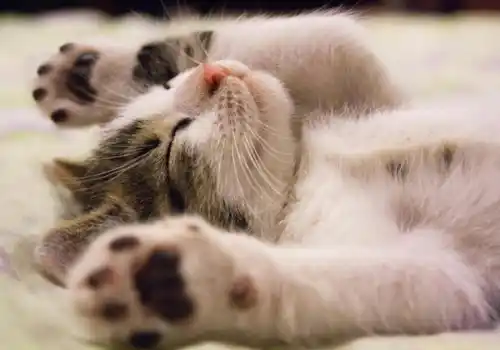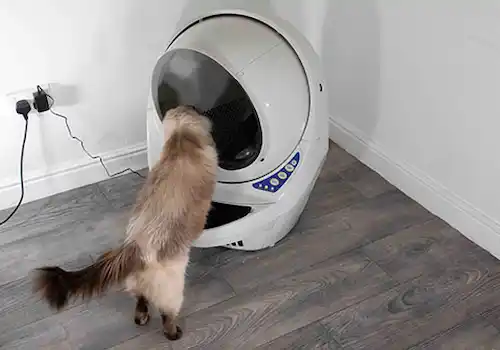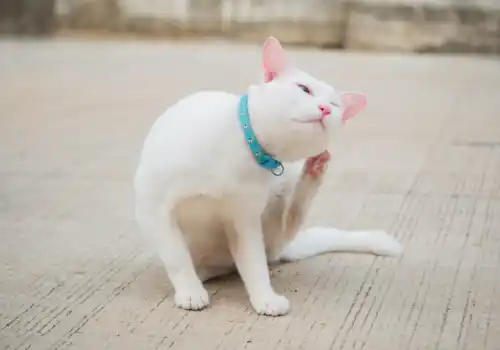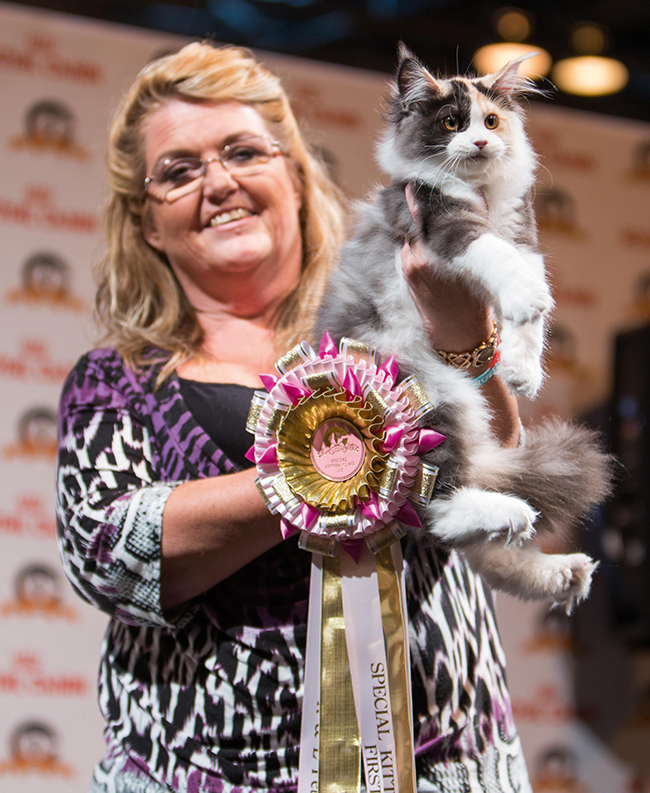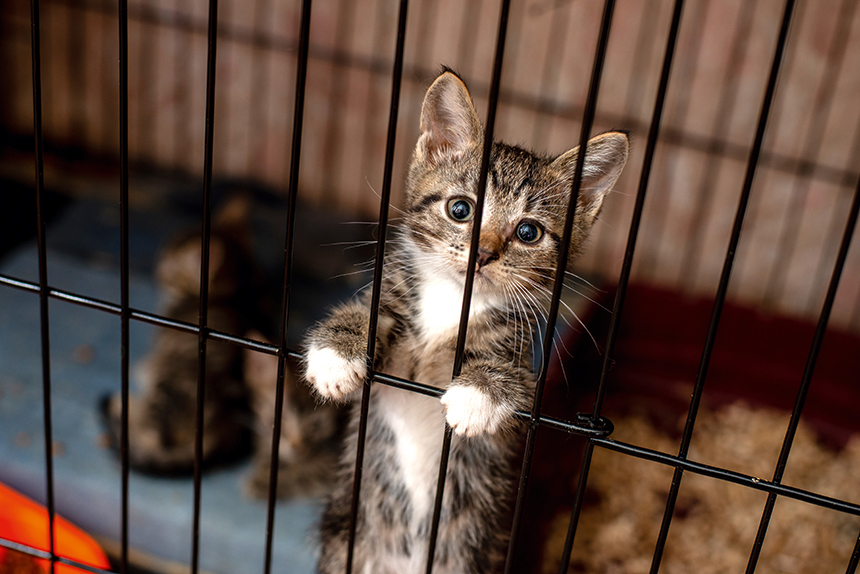We go behind the scenes at one of the most important feline organisations in the UK.
The GCCF has long been synonymous with pedigree cats and the show world, but that’s not all it does. The organisation helps to influence pet policy, educates owners on how best to buy cats, and supports rescue pets and moggies through shows and education too. Here we find out how the GCCF works and is evolving to be a more modern and accessible organisation…
Judging of pedigree cats is done against a standard of points.
The origins
The initials GCCF stand for Governing Council of the Cat Fancy, and the simplest way to describe GCCF is to say that it is the feline equivalent of the Kennel Club in the UK.
The origins of the GCCF go back to the very first cat show which was held in July 1871. The success of this first show led to others quickly being organised and the formation of the National Cat Club in 1887. The National was set up to further the aims of pedigree cat breeding and to keep proper records, as well as promoting shows. For some years, the National kept breed registers of pedigree cats and issued the first ever cat stud book in 1893 which contained records of some 200 cats and 50 individual owners.
During the same period, other clubs sprang up, some were regional clubs and others catered for a specific colour or breed of cat. Both the National Cat Club and The Cat Club set up the first registers of cats and this led to some rivalry, as cats registered with one club could not be registered with the other. The obvious, and sensible, conclusion was that there should be one registry for pedigree cats, and at a preliminary meeting on May 17, 1910 at the Inns of Court Hotel, Holborn, London the Governing Council of the Cat Fancy was formed by the alliance of the National Cat Club and 16 other clubs, some of which are still in existence today, to form a single registry for pedigree cats. A Chairman, Russell Biggs, was appointed together with officers and a committee, and a constitution and rules drafted; the first official meeting was October 11, 1910. Since those far off days as an amalgamation of a few cat clubs, the GCCF now has over 140 member clubs and in March 2011 it became a limited company.
The GCCF promotes well-bred kittens.
Registering cats
During 2021, GCCF registered 26,481 pedigree kittens — so what is meant by a registered kitten, and why is it important if you are purchasing a pedigree kitten? In today’s online world, you can type in ‘Burmese kittens for sale’ for example, and you will be confronted with pages of kittens available via various different online websites. However, how can you be sure that the pedigree accompanying your new kitten is correct? If the kitten is registered with GCCF, then the pedigree background is held on GCCF’s database and can be verified. It will also conform to a laid down Registration Policy that sets out the recommended way in which each pedigree breed should be bred as far as its background breeds, colours, and patterns are concerned, and also any health checks that should be carried out, and which may be necessary before a kitten is registered with GCCF. There are strict rules that GCCF breeders must comply with about the paperwork that must accompany a new kitten when it goes to its new home.
This includes:
● A pedigree certificate signed by the breeder showing at least three generations. It will show the cats’ registered names, their registration numbers, and their GEMS codes (shorthand code for their breed).
● A registration document for the kitten showing the pedigree name, registration number, GEMS code, parents’ names, and other information. This is emailed to the breeder at the time of registration.
● A vaccination card for the kitten showing the record for the full course of vaccinations, usually given at nine and 12 weeks.
● Insurance for the initial first few weeks of new ownership are also recommended to be provided by the breeder. GCCF also commissioned a short video to advise new owners what to look for when purchasing a kitten called ‘A Kitten’s Guide to Good Breeders’ which can be viewed on the home page of the website.
The GCCF is not the only registration body operating in the UK at present, there is also FIFe (Fédération Internationale Féline), a federation of 41 national members in 39 countries; it was formed in 1949 and is based in Luxembourg. There is also TICA (The International Cat Association) with headquarters in Harlingen, Texas and members in Latin America, Northern America, Asia, and Europe. All three registration bodies are members of The World Cat Congress, the object of which is to work together in a spirit of co-operation to improve the health and welfare of all cats.
Cat shows
As well as registering kittens, GCCF also licences shows held by its member clubs. Each affiliated club can apply to hold one championship show a year, and the show calendar on the GCCF website (www.gccfcats.org) is the go-to place for those wanting to find a show in their local area, or for their chosen breed.
Area clubs run shows that cater for all breeds — there are six sections covering the different types of cats from Persians, Semi Longhairs, British, Foreign, and Siamese and Orientals.
The breed clubs run smaller shows specific for their chosen breed, and wins at breed shows are highly prized. There is a show practically every weekend of the year, with some weekends having several from which to choose. Each show has a manager, responsible for organising and running the event, booking the venue and judges, and drawing up the schedule of classes. It’s a mammoth task and the show manager has to be unflappable and well organised, and also needs the assistance of the club committee to assist with the many and varied jobs that go towards delivering a successful show.
The GCCF holds its own show, the Supreme Cat Show, which will be held this year on Saturday October 22 at the NAEC, Stoneleigh Park, Warwickshire. The Supreme Show is unique, with classes exclusive to the Supreme and titles which can only be won there. The show caters for all breeds of cat which are recognised by GCCF and there is a special section for household pet cats. There is also a competition for the best decorated pen.
One of the most common questions asked of cat judges is ‘how do you judge a cat?’ And the answer is against the Standard of Points. Each breed recognised by GCCF (of which there are 40) has a Standard of Points. The standard describes each area of the cat and how the ideal example should look, from its head, including ears, eyes, length and shape of nose, muzzle and chin, to the shape of the body, length of legs, size of paws, length and shape of tail and, of course, the coat — whether smooth and sleek or long and flowing, and how the individual colours and patterns should appear. The Standard is also the ideal which breeders should be aiming for, in order to maintain the integrity of their chosen breed.
However, cat shows are not just for show type pedigree cats, and there is a strong following by those wanting to show their non-pedigree cats, or pedigree cats that don’t meet the show standard for some reason. There are two sections here — Household Pets and Pedigree Pets — in all cases the criteria for judging is condition and temperament; so, you see, there really is something for everyone who wants to have a go at showing their cat!
The GCCF licences shows and runs the Supreme Cat Show.
Feline welfare
The GCCF doesn’t just exist for registration and shows, it has a pivotal role to play in cat welfare and education.
The GCCF helps to speak up for felines by being part of key organisations that shape pet policy. A representative from the GCCF Board of Directors attends the Canine and Feline Sector Group (CFSG), which is a
not-for-profit body. This group is made up of influential organisations, including charities, the vet sector, and the pet industry, who advise Government on behalf of the sector on strategically important welfare issues and standards. GCCF has also been consulted by DEFRA on Breeder Licensing in England, Wales, and Scotland.
GCCF is also a member of The Cat Group, a collection of professional organisations dedicated to feline welfare through the development and promotion of policies and recommendations on the care and keeping of all cats. The Cat Group brings together a range of organisations working on cat welfare from slightly different perspectives. More recently, GCCF has joined the Pet Advertising Advisory Group; PAAG was created in 2001 to combat growing concerns regarding the irresponsible advertising of pets for sale, rehoming, and exchange. The group comprises animal welfare organisations, trade associations, and veterinary bodies. This aspect was highlighted significantly in the last two years with the explosion of new pet ownership during the pandemic, and the serious problems that arose from the activities of back yard breeders.
The Breeder Scheme helps give assurances of a quality bred kitten.
Schemes
GCCF has its own Breeder Scheme, set up around 10 years ago. Breeders who wish to take part sign up to an enhanced code of ethics.
The code requires breeders to meet various criteria, including:
● They must show commitment to their breed by being a member of a GCCF affiliated cat club for the breed.
● They must be familiar with what the breed should look and behave like and endeavour to breed cats of this type.
● They must ensure that their own cats are well cared for.
● They must take steps to make sure the kittens they breed have the best chance of a happy, healthy life and leave them fit and well. Kittens must have completed the full course of vaccines, been examined by a vet at least twice, and be GCCF registered and insured.
● They must try to make sure kittens they breed go to individually suitable, loving homes and that their new owners are given the support and help they may need to look after them.
The scheme is currently under review, in order to strengthen and update it. Breeders’ premises are currently not inspected as part of the scheme and new kitten owners are advised to make sure they are happy with the environment and way in which the kittens are raised before purchasing. When you buy a kitten from a Breeder Scheme breeder you will have the opportunity to tell GCCF what you think of them, and GCCF will use this information to make sure its breeders are meeting new owners’ and their new kittens’ needs.
GCCF is also keen to encourage young people to become involved in the Cat Fancy, and has its own Young Exhibitor Scheme (YES), an educational programme designed to encourage youth participation in the Cat Fancy. It is a structured programme for the growth and development of junior (8 – 16+) exhibitors within the GCCF, aiming to encourage young people to continue to enjoy their hobby as adults and so become the members, stewards, judges, and show managers of the future.
Although the GCCF is a very old organisation, it’s important that it doesn’t rest on its laurels and it’s vital to keep looking towards the future in a fast-paced world. A major project during 2021 was the revamping of GCCF’s own website. The previous site had served well for a few years, but it was felt that it catered mostly for those interested in the Cat Fancy, such as breeders and exhibitors, and there was little to attract the pet cat owner or educate new cat owners who may not only be considering a pedigree kitten, but possibly a kitten or cat from one of the wonderful charities and rescue organisations who work tirelessly to ensure cats have a better life. Accordingly, the content was updated and the vision of a bigger and better website with much more information for everyone interested in cats, was delivered. There are links to charities and helpful information, as well as more in-depth, technical information about genetics and health testing to appeal to the serious breeder or the first-time kitten owner — do take a look!
GCCF has its own office in Bridgwater and the knowledgeable staff are happy to answer questions by phone or email — you can find the contact details on the GCCF’s website.
GCCF breeders sign up to a code of ethics.
Building for the future
Although the GCCF is a very old organisation, it’s important that it doesn’t rest on its laurels and it’s vital to keep looking towards the future in a fast-paced world. A major project during 2021 was the revamping of GCCF’s own website. The previous site had served well for a few years, but it was felt that it catered mostly for those interested in the Cat Fancy, such as breeders and exhibitors, and there was little to attract the pet cat owner or educate new cat owners who may not only be considering a pedigree kitten, but possibly a kitten or cat from one of the wonderful charities and rescue organisations who work tirelessly to ensure cats have a better life. Accordingly, the content was updated and the vision of a bigger and better website with much more information for everyone interested in cats, was delivered. There are links to charities and helpful information, as well as more in-depth, technical information about genetics and health testing to appeal to the serious breeder or the first-time kitten owner — do take a look!
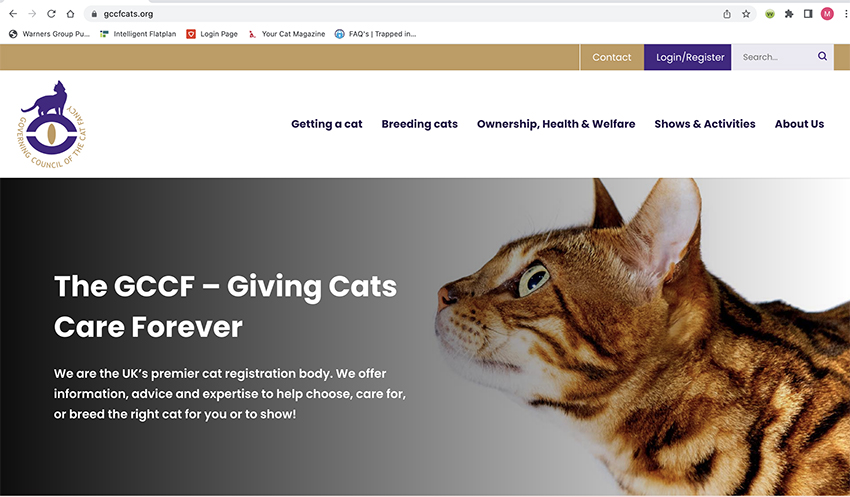
The GCCF has a new website: https://www.gccfcats.org/
GCCF has its own office in Bridgwater and the knowledgeable staff are happy to answer questions by phone or email — you can find the contact details on the GCCF’s website.

